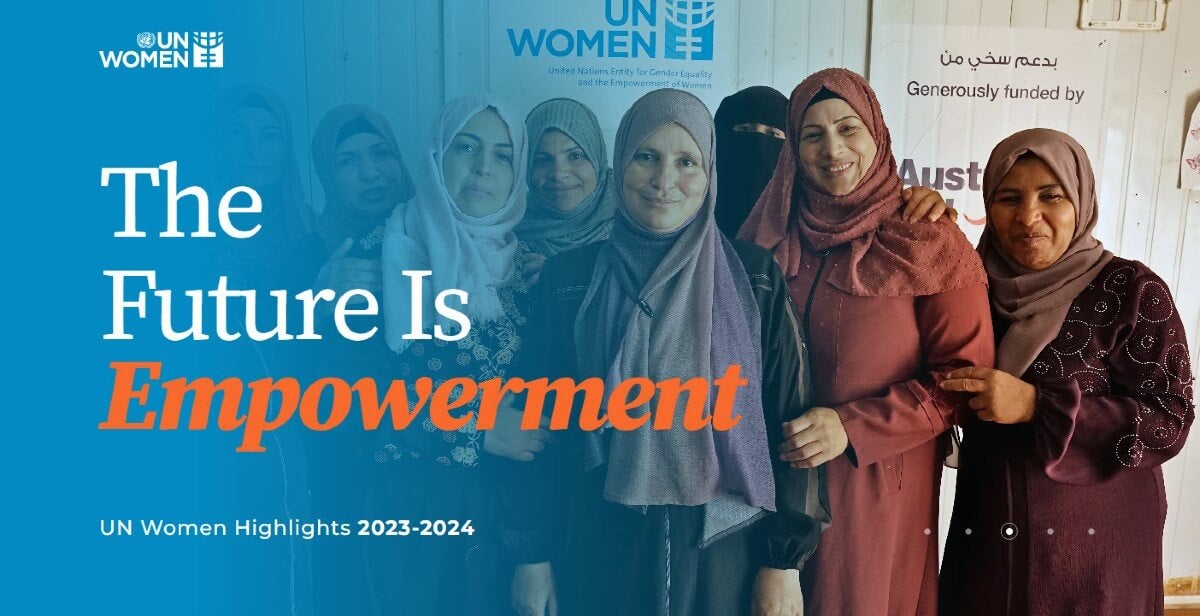Why investing in women is a human rights issue

Investing in women is both an economic imperative and a human rights issue. It is a human rights issue because the global economic and financial systems are complicit in perpetuating gender inequality. At the same time, financial resources are required to overcome these challenges and build a world that enables all women to realize their rights. Investing in women enables women to thrive, which contributes to prosperity that can be measured in financial terms.
Our financial and economic systems do not work for gender equality
The world is pursuing growth at the expense of the health and wellbeing of people and the planet. The current financial system is driven by profit, which can be at women’s expense when the interests of investors don’t align with the needs and priorities of women. Climate change is a consequence of the unbounded consumption of fossil fuels without regard for its social and environmental costs. And at the heart of the climate crisis are the disproportionate impacts on women and girls who are more prone to the negative consequences of climate change.
Globally interconnected markets and institutions shape women’s experiences and opportunities in ways that are not always equitable. For example, because of patriarchal norms and attitudes about women in the world of work, women end up doing more unpaid care and domestic work, constraining their economic agency, autonomy, and well-being. Women do three times more unpaid care work than men, but the economic value goes uncounted because it is invisible in measures such as the Gross Domestic Product (GDP). A disproportionate share of this work comes from women in low-income, migrant, and racialized groups, highlighting that women face discrimination due to factors like gender, race, disability, nationality, and sexuality.
Women have only 64 per cent of the legal rights of men, and deep-rooted inequality dampens women’s economic opportunities. Women continue to be overrepresented in lower-paid jobs and sectors, and underrepresented where earning potential is greater. This is just one factor driving pay disparities between men and women. More than half of all women who work are in the informal economy, which is often precarious and vulnerable, with an even greater share—around 90 per cent—in developing countries. Globally, women in the paid workforce earn 20 per cent less than men on average, a gap that jumps to 35 percent in some countries. The inequalities are also startling in the world of business. For example, the gender gap persists in the number of established businesses (32 per cent) and those trying to get started (20 per cent). Inequality of opportunity in the economy compounds across generations, locking women into poverty and preventing them from benefiting equally from economic growth.
Financial resources are necessary for women to realize their rights
Despite the challenges the financial system causes for women, reversing gender inequality requires financial resources. The projected annual shortfall on what is needed to achieve global gender equality goals is USD 360 billion. And evidence shows that at the current rate of progress, more than 342.2 million women and girls will still live in extreme poverty by 2030.
One of the most important area investments for gender equality is social protection, which is crucial for reducing poverty and vulnerability. However, only 26.5 per cent of women are covered by comprehensive social protection systems.
In addition to financial resources, women need access to land, information, technology, and natural resources. In 2022, 2.7 billion people still lacked internet access, which is a major barrier to their ability to get a job or start a business. Women also are less likely than men to have ownership or secure tenure rights over agricultural land in 87 per cent of countries where data are available.
Thriving women drive prosperous economies
Achieving gender equality and women’s empowerment does not require a business case because human rights are priceless. We, however, know that women contribute to the economy directly through engagement in economic activities including formal work and entrepreneurship, and indirectly through other contributions including taking on a disproportionate share of unpaid care work. Evidence shows that closing gender gaps could boost GDP per capita by 20 per cent.
Investing in women can be an opportunity. It is estimated that closing existing gaps in care services and expanding decent works, would create almost 300 million jobs by 2035. Studies also show investment in the care sector could create almost three times as many jobs as the same investment in construction and produce 30 per cent less greenhouse gas emissions. Investments in care will also free up much needed time for women to engage in activities of their choice including economic activities, education, or leisure. Despite these clear benefits, women continue to be left behind in the economy.
Recognizing women’s rights as an investment issue is critical for creating transformative solutions that enable women to realize their rights, escape the cycle of poverty, and truly thrive. Investing in women is a cornerstone for building inclusive societies. Progress for women benefits us all.






